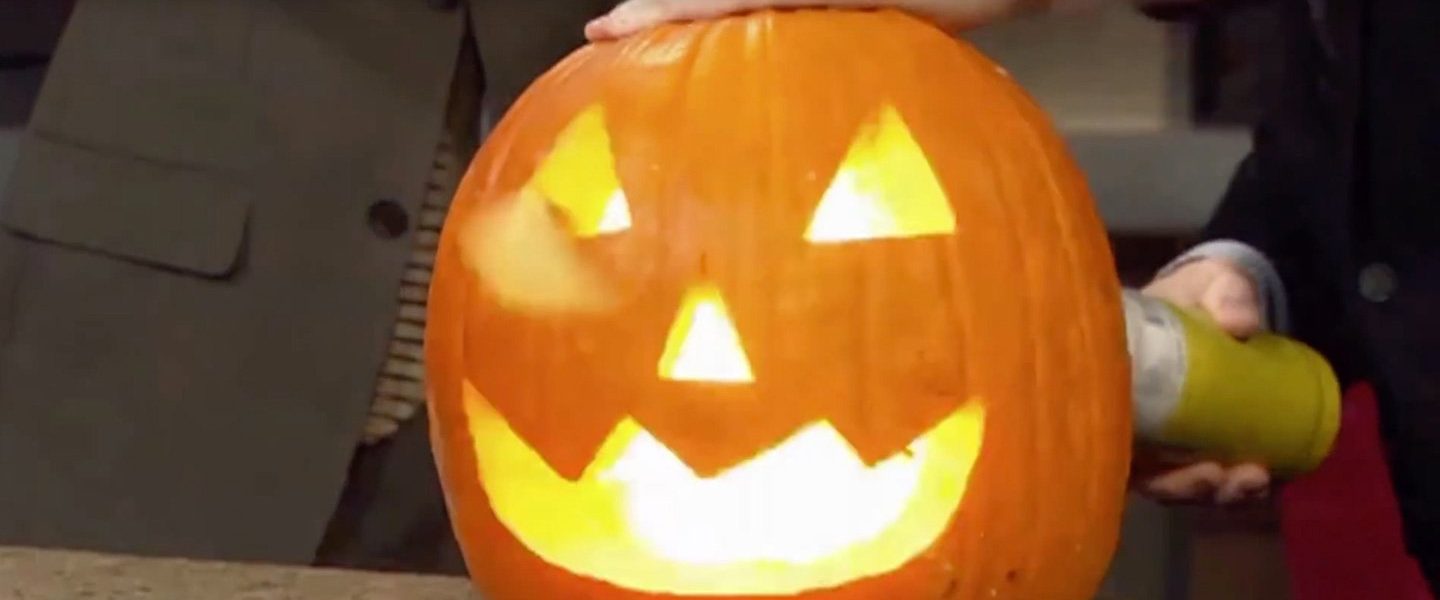Glowing Pumpkins - Halloween Science
Just add a glowing powder to your Halloween pumpkins and you’ll get a spooky Halloween display without all the mess of carving.

A chemical reaction is triggered inside the pumpkin, and the previously carved pieces explode from the pumpkin. This method is a favorite among chemistry teachers, who use the demonstration to illustrate the energy released when you break a triple bond in a molecule of acetylene.
The reaction that takes place inside the pumpkin uses calcium carbide to generate a very small amount of acetylene gas. When the gas is ignited, a tremendous amount of energy is released, which pushes the pieces of previously carved pumpkin out. Acetylene gas is very explosive. Mixtures with air containing between 3% and 82% acetylene are explosive on ignition.
This information is provided for educational purposes only. The popular Exploding Pumpkin experiment should only be performed by a trained professional.
The reaction inside the pumpkin uses calcium carbide and water to generate a very small amount of acetylene gas. When the gas is ignited, a tremendous amount of energy is released, which pushes the pieces of previously carved pumpkin out. Acetylene gas is very explosive – mixtures with air containing between 3% and 82% acetylene are explosive on ignition.
This information is provided for educational purposes only. Please don’t try this experiment unless you are a chemistry teacher or have the proper safety training. Make friends with your local chemistry teacher and let them amaze you with their pumpkin carving skills.